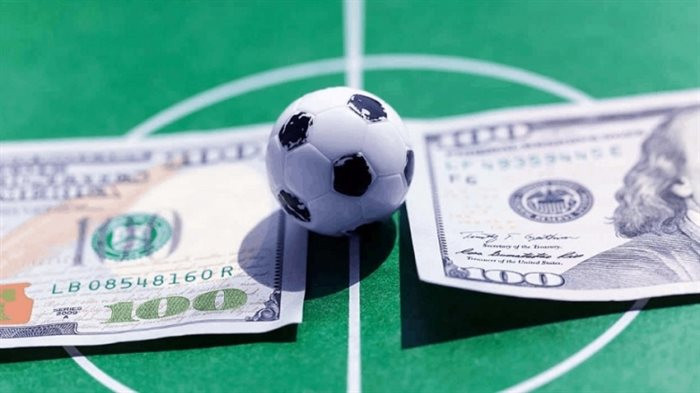Methods to Analyze Bookmaker Odds: A Guide to “Soi Kèo”
페이지 정보
작성자 khatrang 작성일25-09-29 21:33 조회10회 댓글0건관련링크
본문
In sports betting, one of the most important skills is the ability to analyze bookmaker odds — to detect value, spot mispriced odds, and make smarter bets. In Vietnamese betting culture, this is often called “soi kèo nhà cái” (literally “shine on the bookmaker’s odds”). Rather than blindly trusting the listed odds, successful bettors
soccer prediction games
use systematic methods to evaluate them. This article explores reliable approaches and practical tips for doing so.
Why “Soi Kèo” Matters
Bookmakers set their odds to balance risk and ensure profit (the bookmaker margin). Sometimes the odds they present reflect public sentiment, hidden information, or adjustments after betting flows. If you can identify when the odds do not reflect true probabilities, there is value to be captured. Soi kèo seeks to find those mismatches between your own estimated probabilities and the posted odds.
Core Methods for Analyzing Odds
1. Compare Odds Across Multiple Bookmakers
Different bookmakers
top soccer prediction sites
may offer different odds for the same match. By comparing:
Odds differences (e.g. One site gives 1.90, another 2.00)
Handicaps differences (one gives –0.5, another –0.75)
Over/Under lines variations
You may find arbitrage opportunities (very rare these days) or simply better value. If one bookmaker offers significantly
which is the most accurate football prediction app
higher odds on a given outcome compared to the rest, that might indicate:
delayed reaction to new information
a bookmaker trying to attract bets on a particular side
or a misjudgment.
Using odd comparison tools / aggregator sites helps speed this process.
2. Monitor Odds Movements (Line & Odds Shifts)
Odds and handicaps tend to move from the moment they are first published until kickoff. Sharp movements often hint at:
new information (injuries, lineup changes)
heavy money (large bettors or syndicates placing big bets)
bookmaker adjusting margins to balance liabilities
By watching how odds move—especially if a line becomes more favorable to one side—you might infer market sentiment or insider information. If you observe that odds are drifting (getting worse) for one side, it may be best to act before the shift.
3. Use Statistical Models and Your Own Probability Estimates
Rather than relying solely on bookmaker odds, create your own probability model for match outcomes. Use:
team strength ratings (attack / defense metrics)
recent form
head-to-head records
injuries, suspensions, home/away performance
Convert your model’s probabilities into implied odds:
Implied odds = 1 ÷ probability
Then compare these implied odds to bookmaker odds. If your model suggests the true probability of an outcome is higher than the bookmaker’s implied probability, that bet might offer value.
4. Focus on Matches You Know Well
One of the most consistent methods is to specialize in leagues, teams, or styles you follow closely. Knowledge of local conditions, team motivation, coaching styles, or insider rumors gives you an edge. In matches you don’t know, rely more on models than intuition.
5. Be Wary of “Over-adjusted” Odds
Bookmakers sometimes overreact when too many bets are placed on one outcome, shifting odds steeply to discourage further bets. This is known as odds smoothing or liability adjustment. If you see a drastic odds change, examine whether:
it reflects new information
or it is a bookmaker attempt to discourage further holding of liability
Sometimes the sharper (more measured) line is the one you saw earlier, before the overreaction.
Practical Tips in “Soi Kèo”
Watch for odds that “stall” — If a line moves initially but then stops or has minimal change while other bookmakers continue moving, that stationary bookmaker might have insight.
Check “juice” / bookmaker margin — Some odds packages have higher margins, reducing true value.
Use small early bets to test movement — a partial bet might show you how odds react.
Don’t overextend — Value bets can lose; manage your bankroll.
Document your bets and results — track which methods worked, reflect on mistakes, refine your approach.
Stay updated on news — last-minute injury, weather changes, team motivation (e.g. Necessity to survive relegation or chase title) can suddenly outweigh earlier assumptions.
Example — Applying the Methods
Imagine two teams: Team Alpha vs Team Beta. The bookmaker initially posts a handicap line:
Alpha –0.75 at odds 1.95
Beta +0.75 at odds 1.90
You run your statistical model and estimate:
Probability Alpha wins by >1 goal: 45% → implied odds 2.22
Probability Alpha wins by exactly 1 goal: 25% → partial
Probability Beta avoids defeat: 30% → implied odds ~3.33
Your model suggests that the chance of Alpha winning by more than one is underpriced by the bookmaker. Meanwhile, over the next few hours:
Some bookmakers shift the line to Alpha –1.0
The odds on Alpha –0.75 increase to 1.98
You detect that market action is pushing away from the initial line. You might decide to bet early at –0.75 before the shift, where value was better.
Later, you check alternative bookmakers and find one still offering the old 1.95 odds — a possible value stand.
Risks and Caveats
Even well-analyzed “value bets” can lose. Sports are unpredictable.
Models are only as good as their inputs — inaccurate data or wrong weights lead to bad estimates.
Odds movement can be misleading — sometimes odds shift without real justification, just to balance bookmaker risk.
Over-betting or overconfidence after winning early bets can lead to big losses.
Final Thoughts
“Soi kèo nhà cái” is not about guesswork — it’s about disciplined, comparative analysis. The best bettors don’t blindly follow the posted odds. They compare across bookmakers, track movement, build their own estimates, and act when they see discrepancies.
댓글목록
등록된 댓글이 없습니다.

 TOP
TOP










